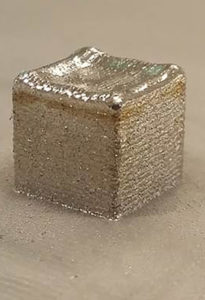Results 1 to 1 of 1
-
03-10-2017, 04:06 PM #1Administrator

- Join Date
- Oct 2016
- Posts
- 2,028
Deakin University 3D Prints BNNT/Titanium Composite
About a year ago, the National Research Council Canada started to expand its production of nanotubes made from lightweight boron nitride, also known as BNNTs, and it was projected that BNNTs would be used as an additive manufacturing material just as much as carbon nanotubes within the decade. That day may be arriving sooner than expected, as researchers at the Institute for Frontier Materials (IFM) at Australia's Deakin University are reporting that they are the first ever to successfully 3D print a BNNT/titanium composite. Being able to 3D print large quantities of BNNTs, which have some very unique qualities, could significantly impact multiple industries, from aerospace, defense, and energy to automotive and health. The BNNT 3D printing breakthrough comes from an IFM collaboration between the additive manufacturing team, led by Dr. Daniel Fabijanic, and Alfred Deakin Professor Ying (Ian) Chen's Nanotechnology team. Read more at 3DPrint.com: http://3dprint.com/167462/deakin-ifm-3d-printed-bnnts/





 Reply With Quote
Reply With Quote




Do bed magnets deteriorate.
04-29-2024, 01:35 AM in General 3D Printing Discussion